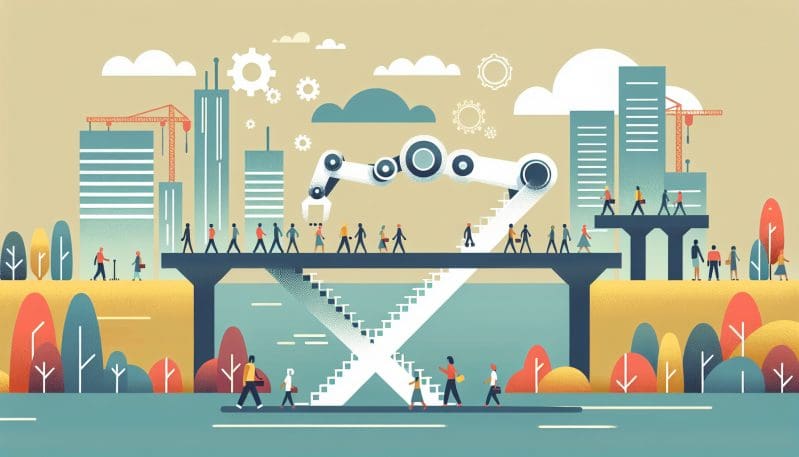The Future of Work: Bridging the Skills Gap in an Automated Era
- Home
- The Future of Work: Bridging the Skills Gap in an Automated Era

- Editors Desk
- February 23, 2024
- 0 Comments
As we surge into an age dominated by artificial intelligence and automation, the landscape of work is undergoing a seismic shift. Traditional roles are being redefined, and the skills required to remain relevant in the workforce are evolving. This transformation thus begs a crucial question: How do we prepare current and future generations for jobs that may not even exist yet?
In this post, we’ll explore how companies, educational institutions, and policymakers can collaborate to bridge the growing skills gap. With the advent of new technology, the demand for digital fluency, problem-solving skills, and adaptability is skyrocketing. However, our education and training systems are lagging, often deeply entrenched in outdated curricula and teaching methods. The divide between the skills taught and the skills needed is widening, and we must take action to close it.
Firstly, we acknowledge the importance of lifelong learning. In a world where change is the only constant, the ability to continuously learn and upskill is vital. For individuals, this means fostering a mindset of curiosity and growth. For employers, it involves supporting their workforce through training programs and professional development opportunities.
Secondly, we discuss the role of technology in personalized education. Customized learning experiences, powered by AI and machine learning algorithms, can pinpoint an individual’s skills gaps and deliver tailored content to address them. This technology not only makes learning more efficient but also more accessible, breaking down geographical and economic barriers to education.
Furthermore, we emphasize the need for agile training programs. Traditional degree programs are often too rigid to keep pace with the fast-evolving job market. Instead, we require flexible, competency-based educational pathways that can quickly adapt to new industry standards and technologies.
As we dissect these challenges and opportunities, let’s remember that a workforce empowered with the right skills is key to economic growth and innovation. Ensuring that no worker is left behind means rethinking how we educate and train our labor force for a future yet to be written.
Join the conversation at our upcoming conference #WorkCongress taking place on May 1, 2024, where industry leaders, policymakers, and educators will come together to define actionable strategies for the evolving world of work. For more information and to register, visit our website at https://workcongress.com. Stay ahead of the curve—be part of shaping a future where every worker finds their place in the new work order.
